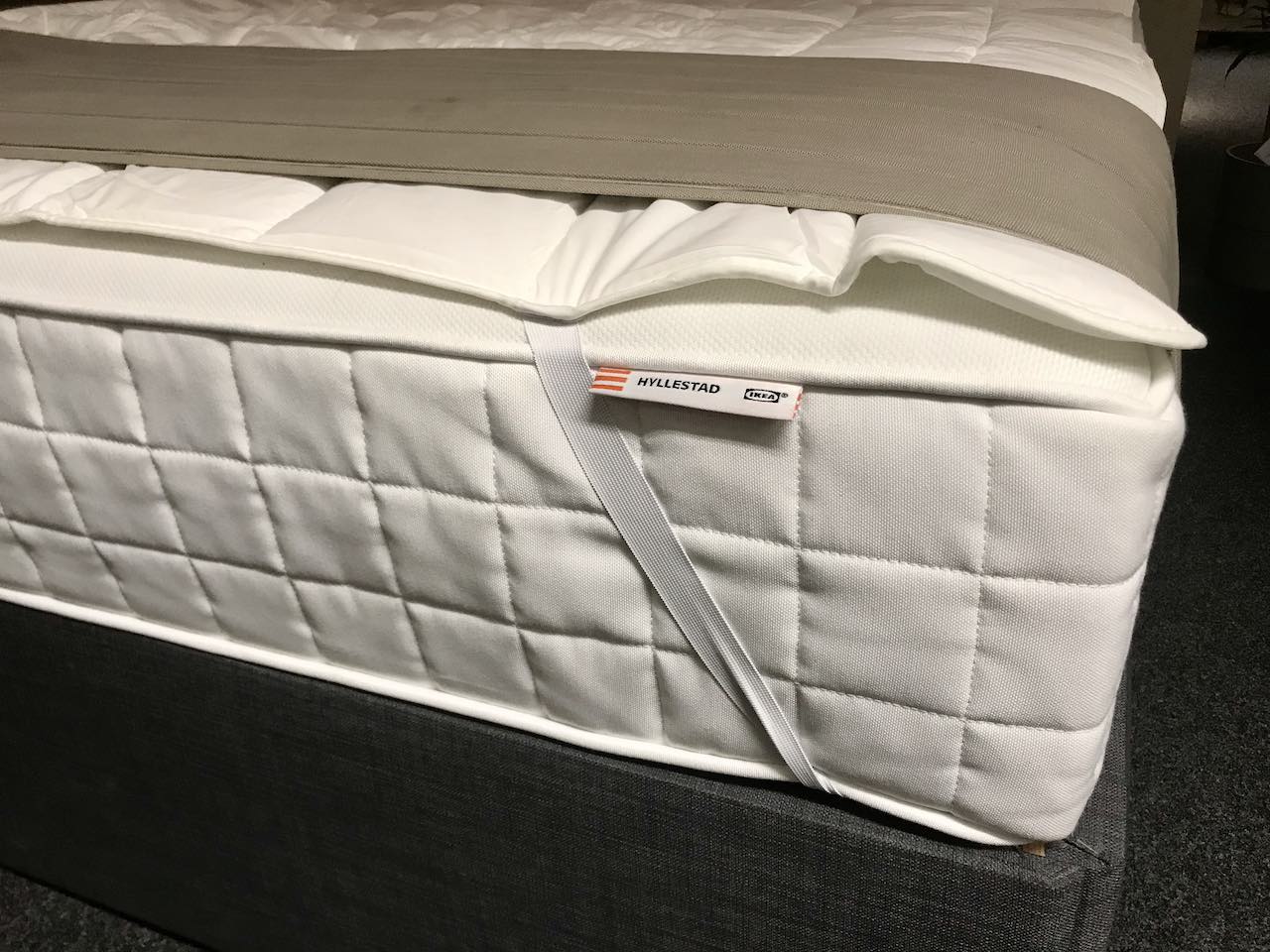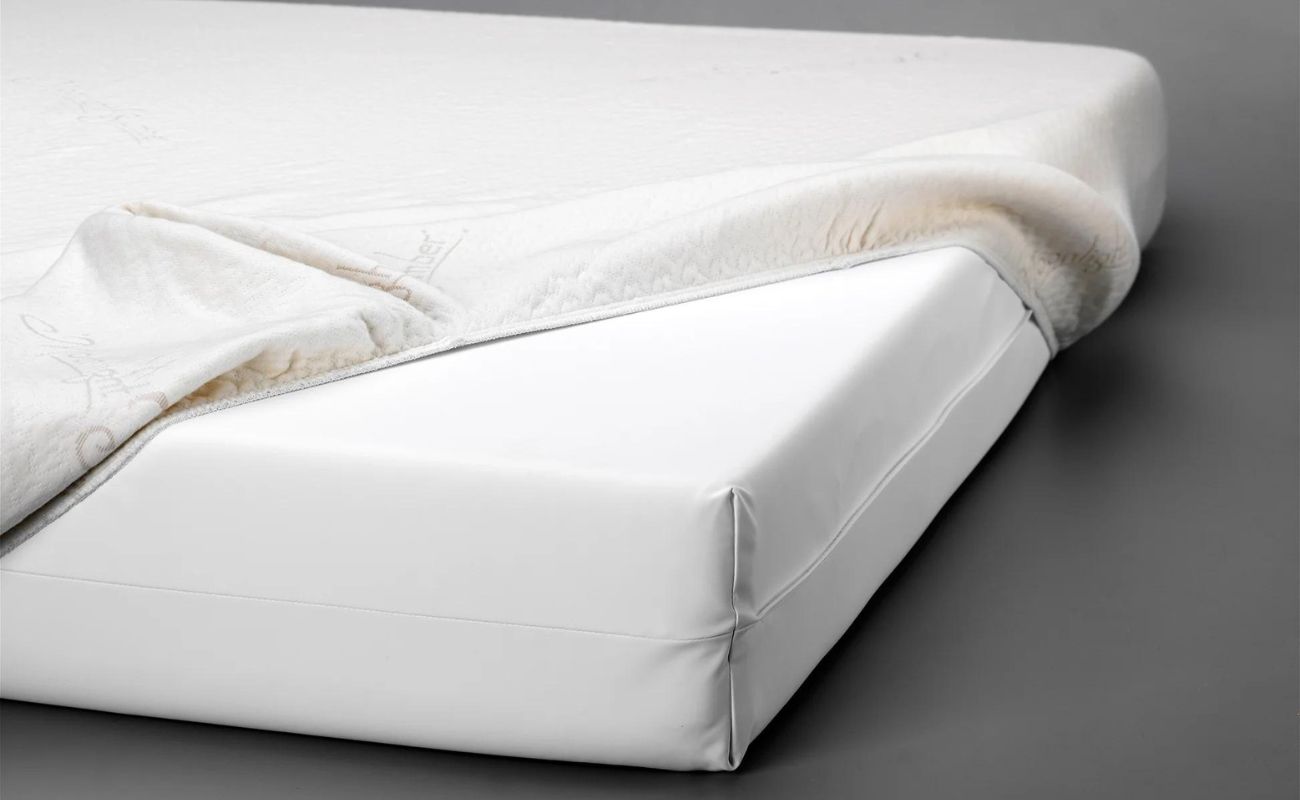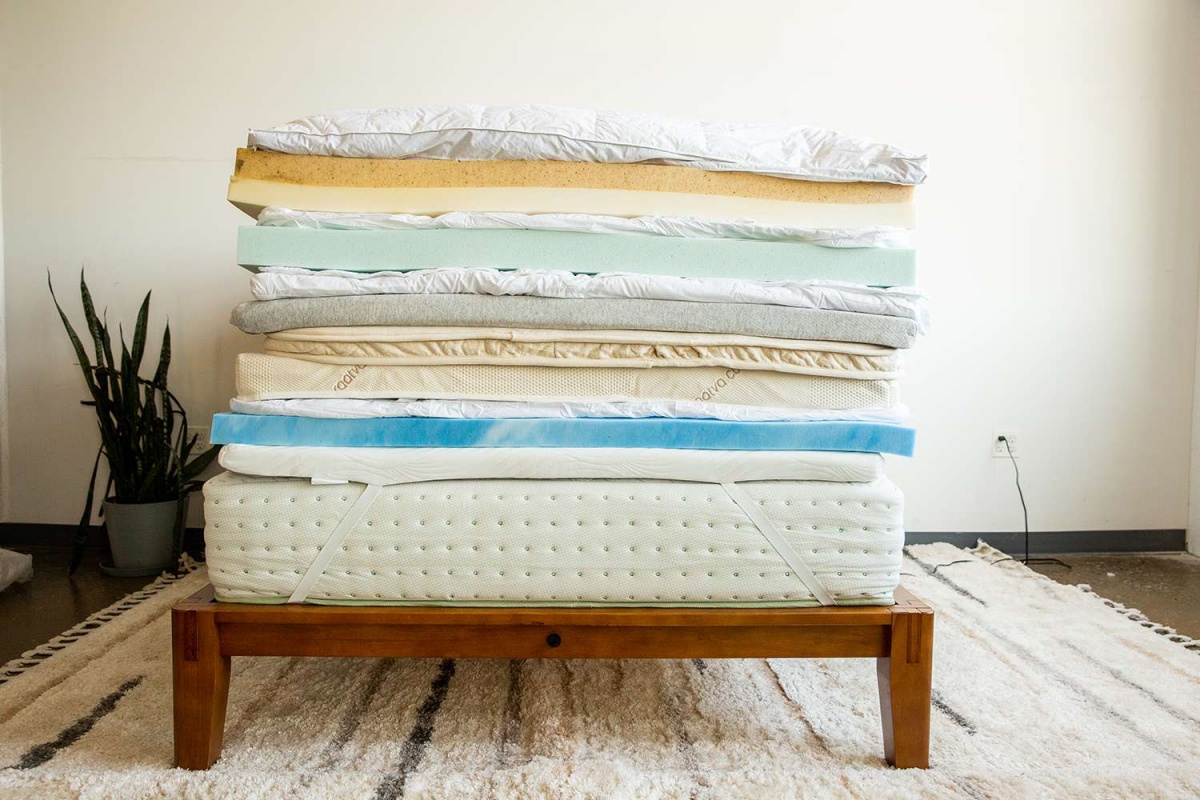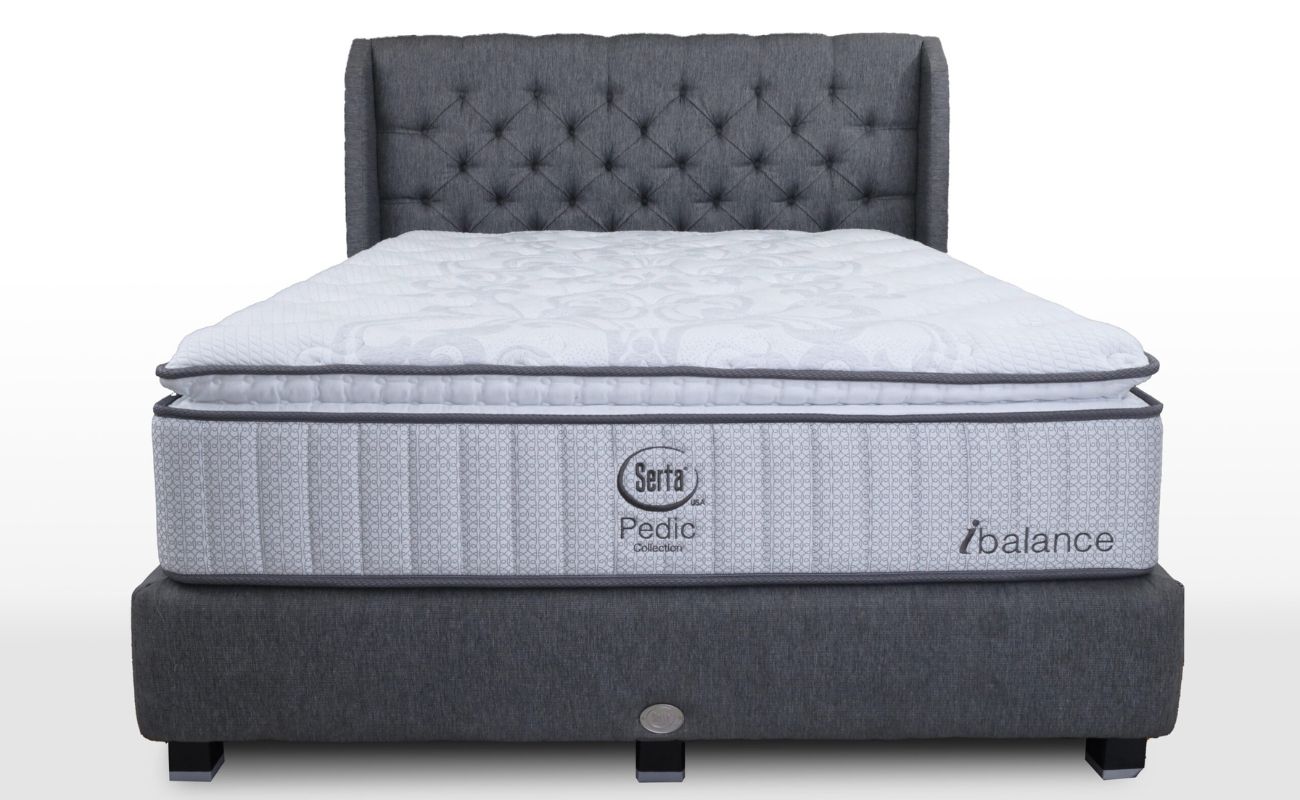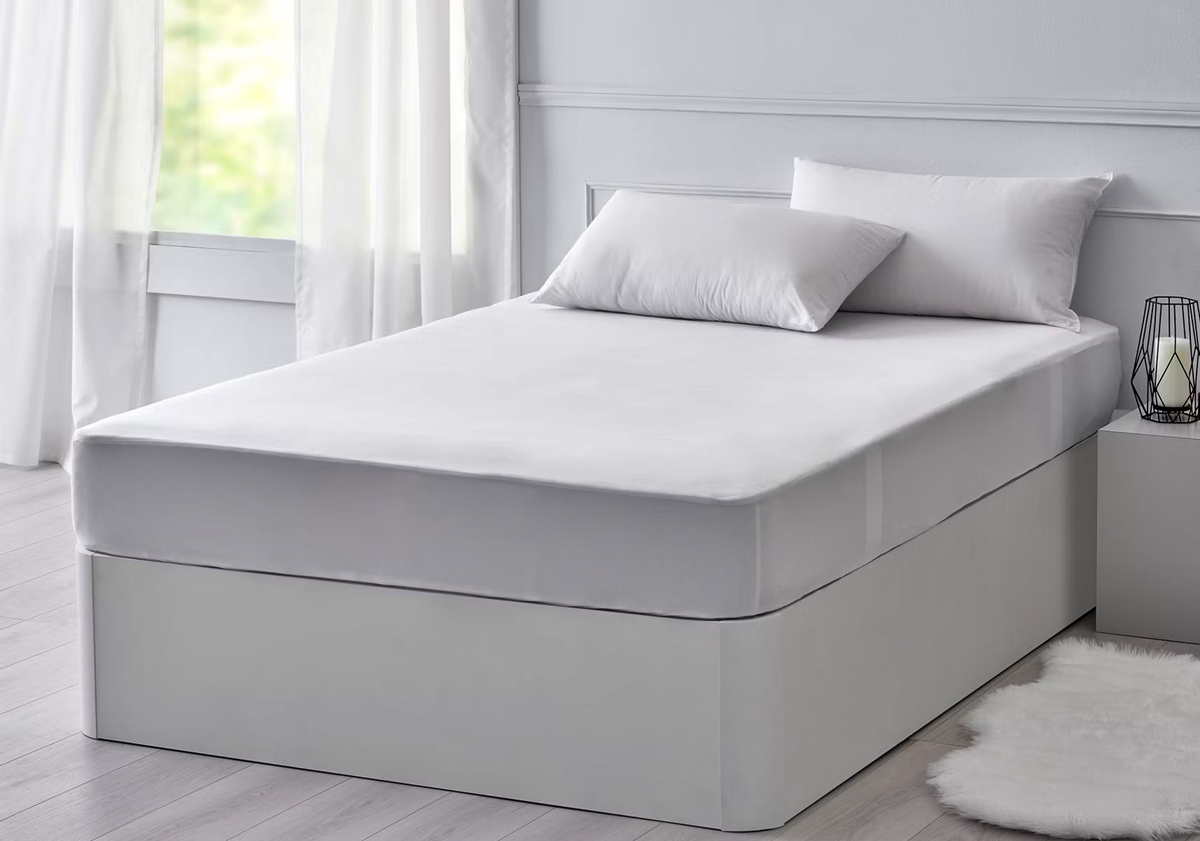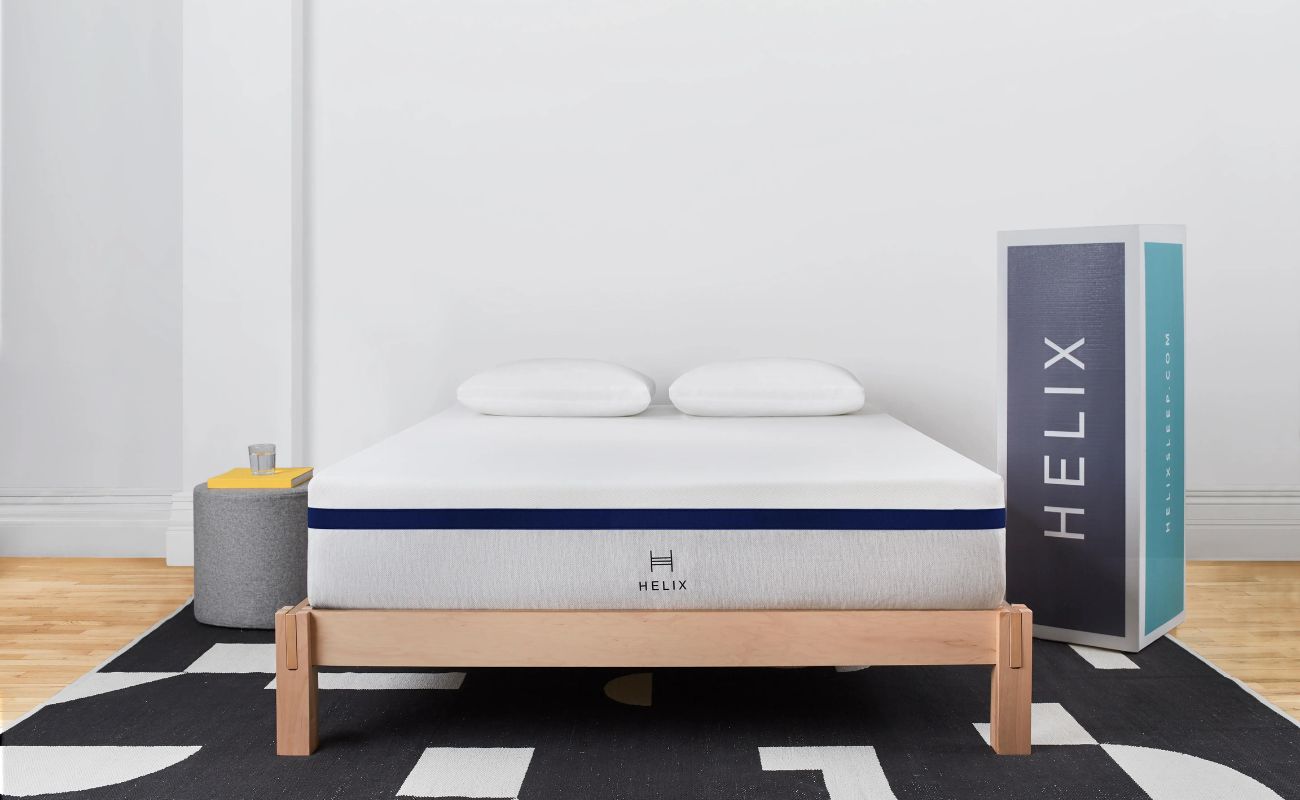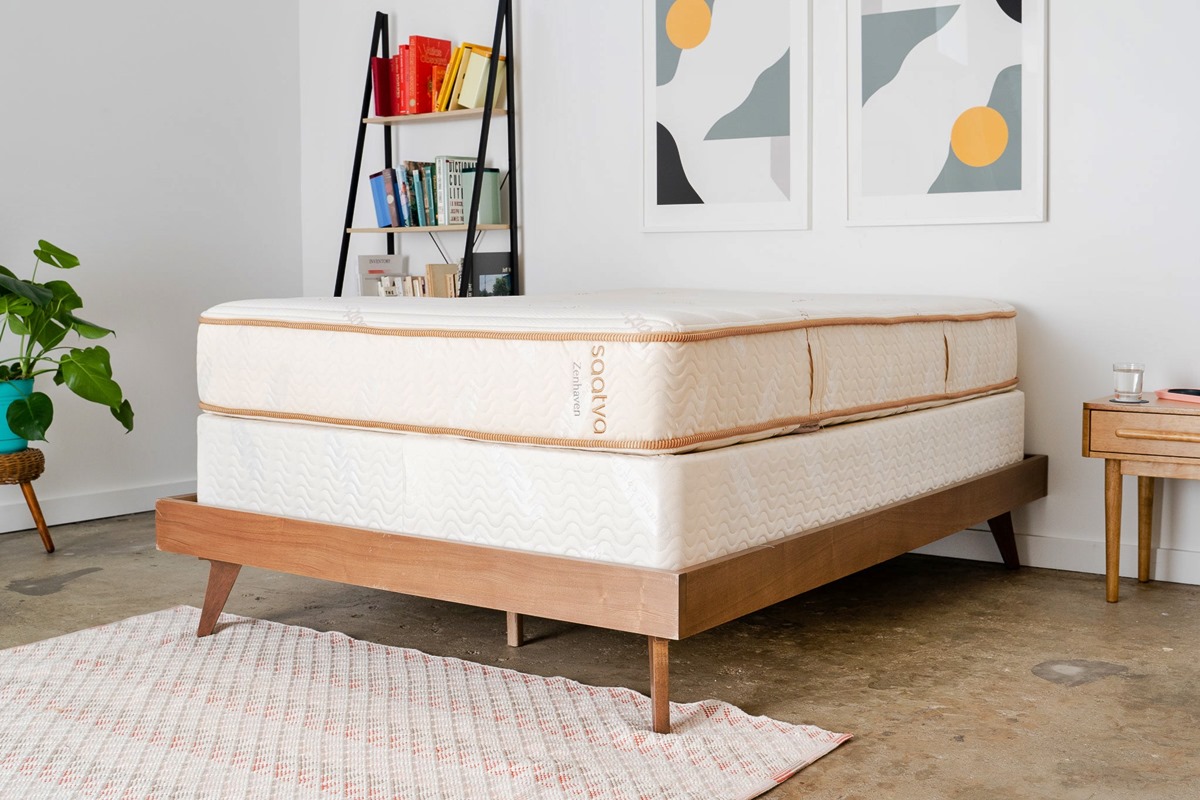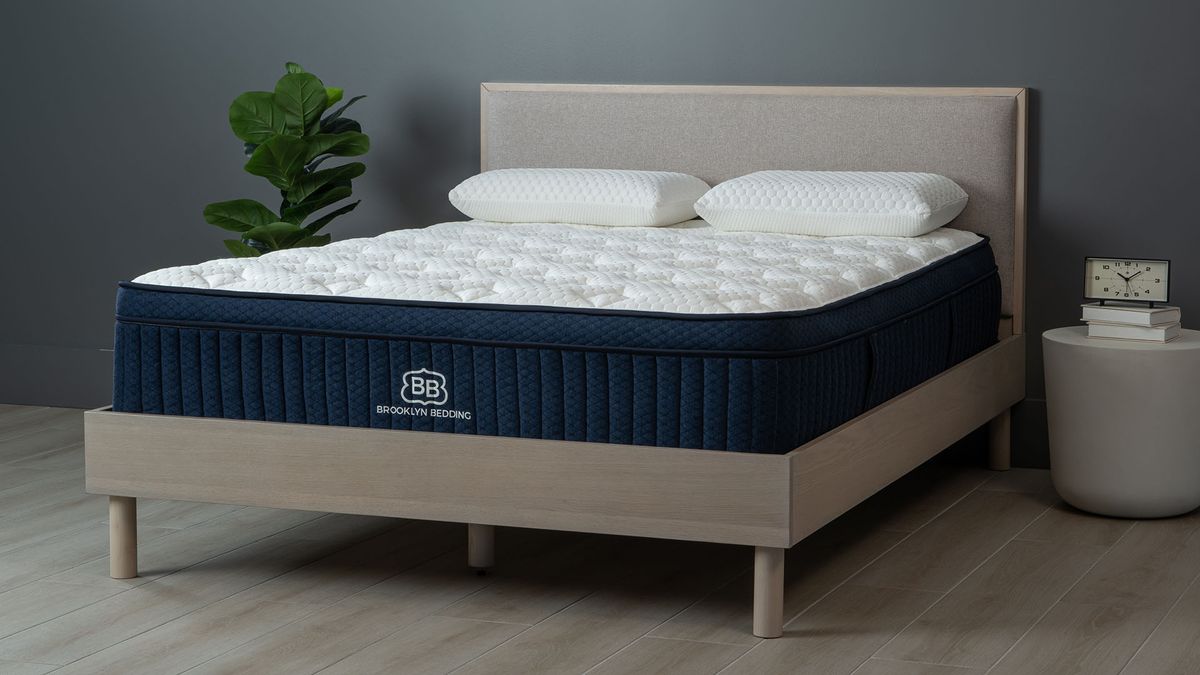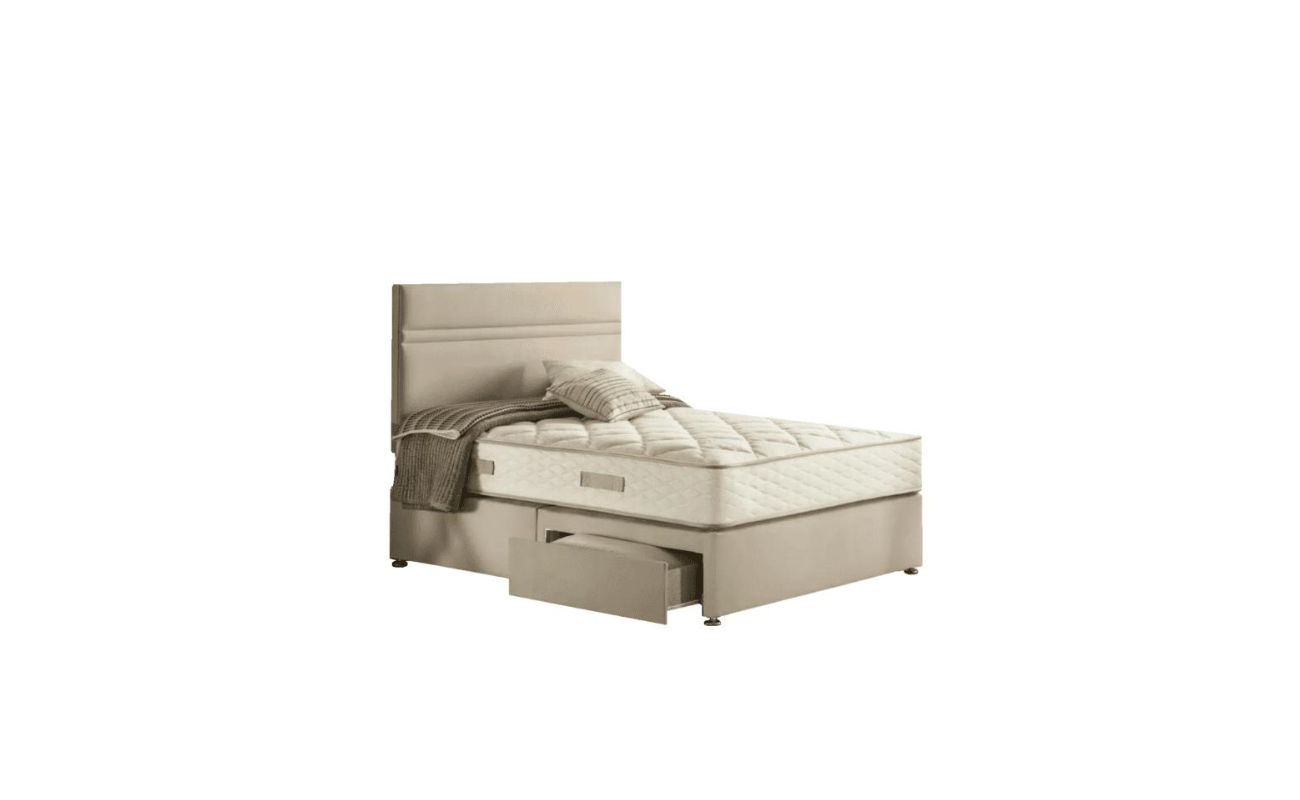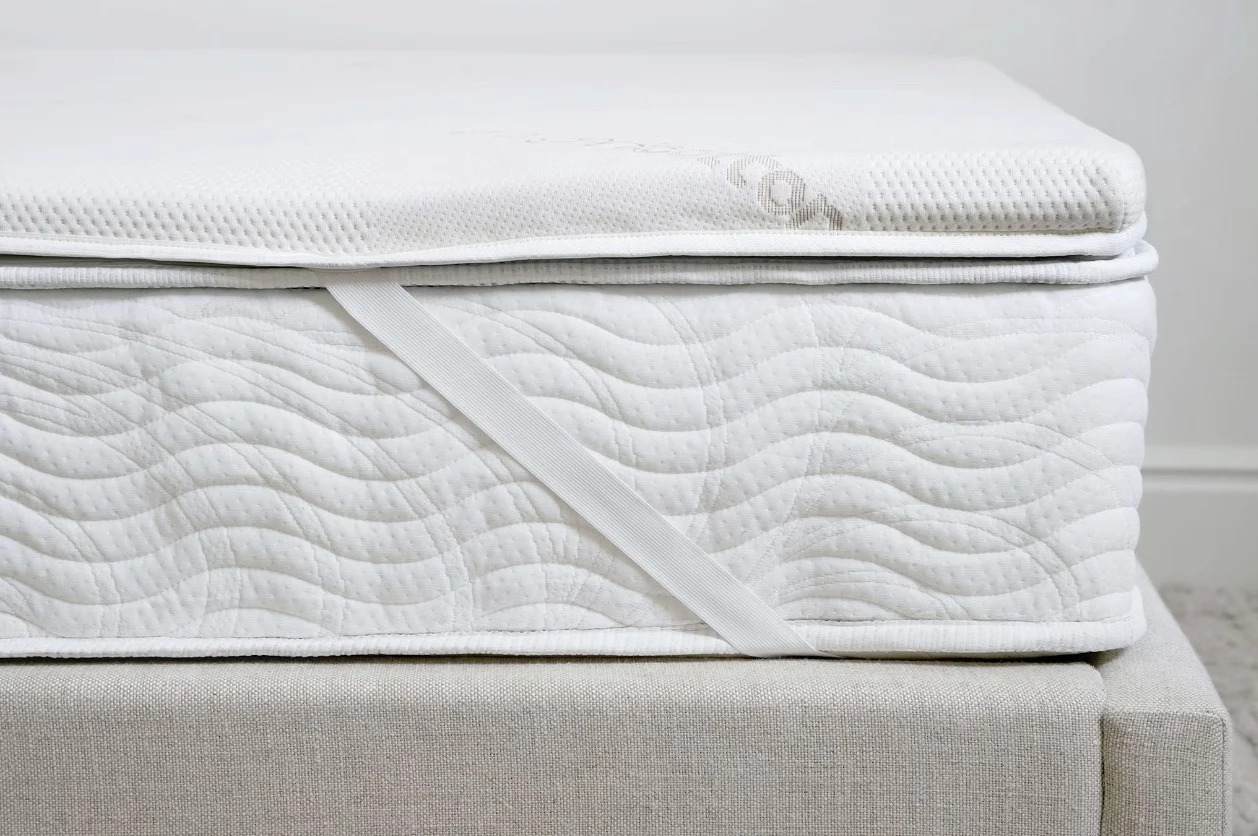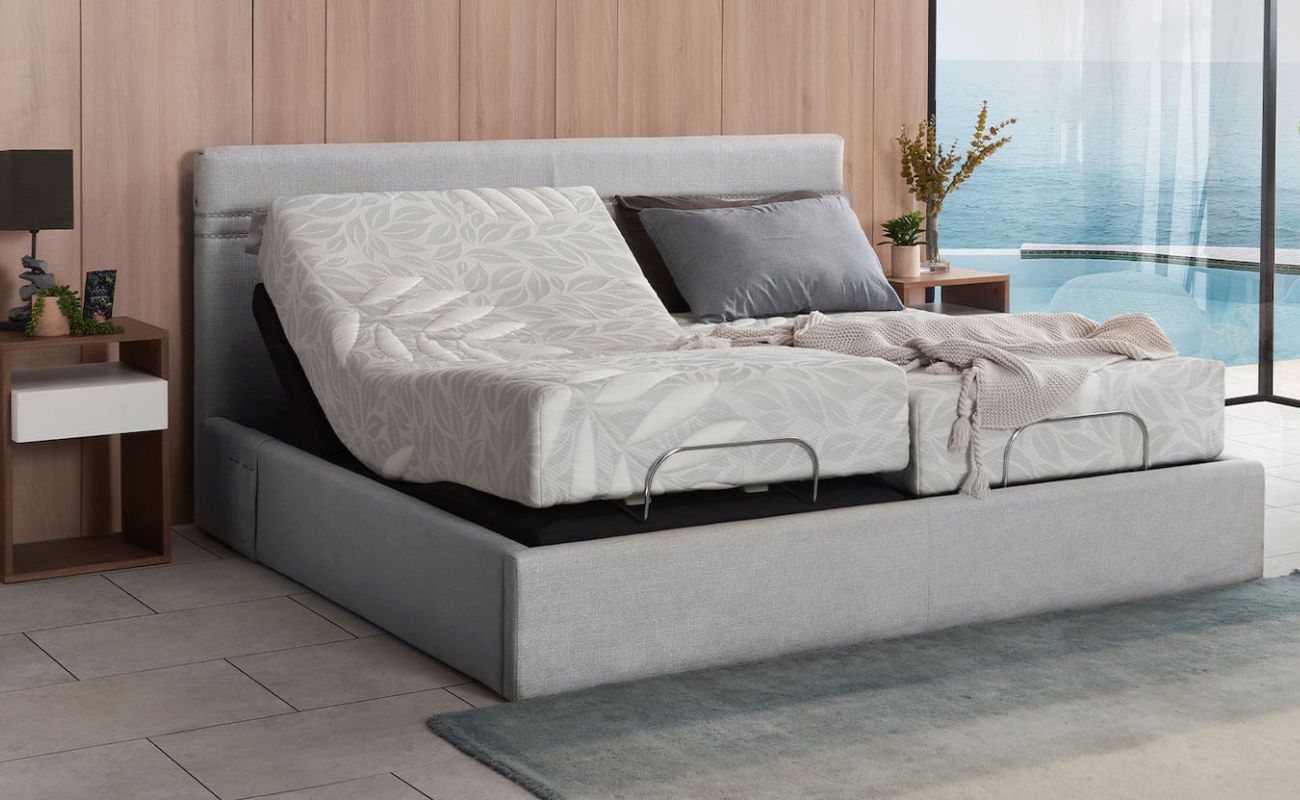Home>Furniture>Bedroom Furniture>What Is The Best Mattress For Osteoarthritis
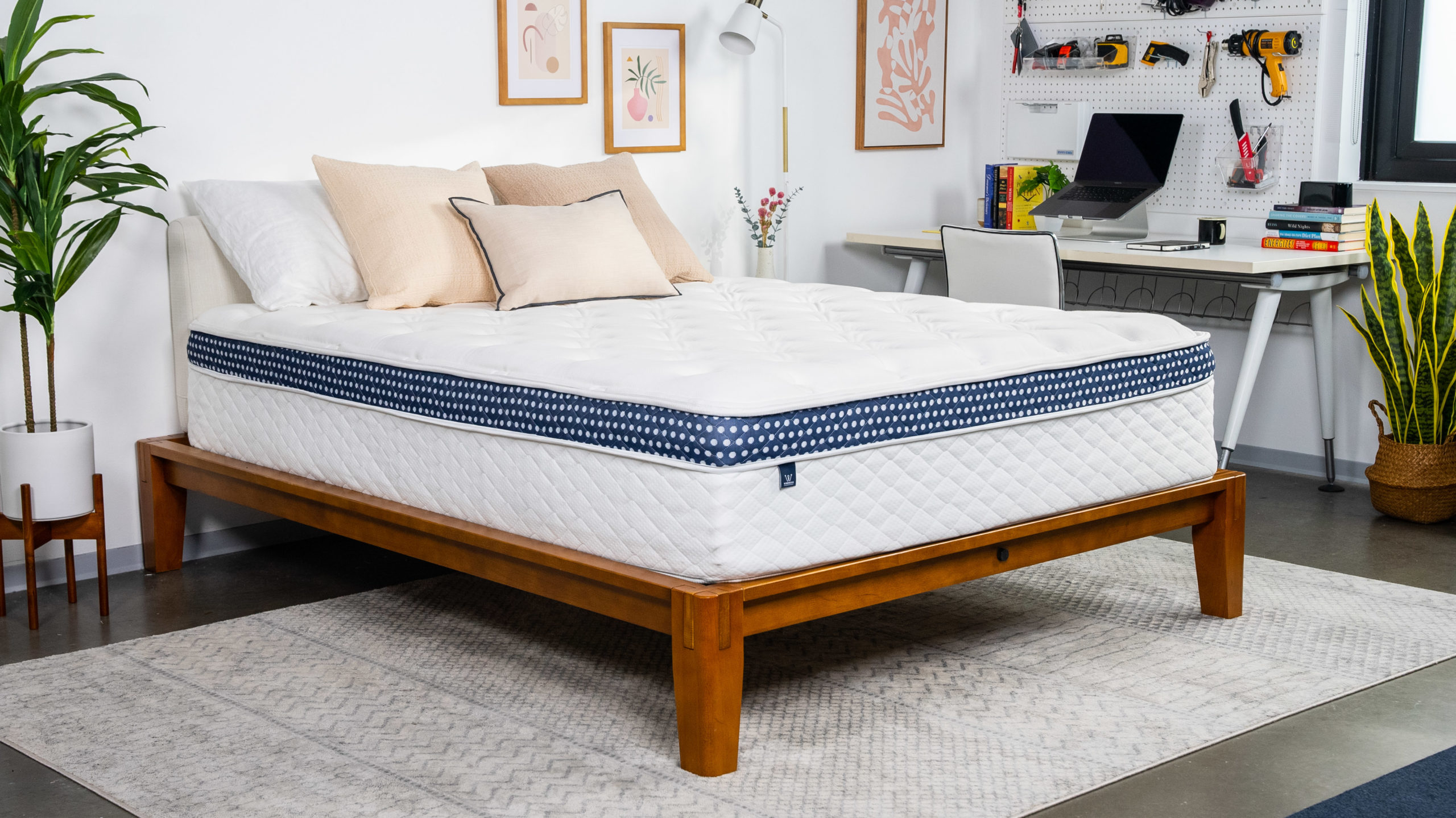

Bedroom Furniture
What Is The Best Mattress For Osteoarthritis
Modified: December 7, 2023
Find the perfect bedroom furniture for osteoarthritis patients. Discover the best mattresses designed to provide comfort and support.
(Many of the links in this article redirect to a specific reviewed product. Your purchase of these products through affiliate links helps to generate commission for Storables.com, at no extra cost. Learn more)
Introduction
Welcome to the world of bedroom furniture, where the right mattress can make all the difference for those with osteoarthritis. Osteoarthritis is a common condition that affects millions of people worldwide and can cause chronic pain and discomfort in various joints. While there is no cure for osteoarthritis, finding the right mattress can provide much-needed relief and improve sleep quality.
Choosing the best mattress for osteoarthritis requires careful consideration of several factors, including support, comfort, and pressure relief. In this article, we will explore the different types of mattresses available and how they can help alleviate the symptoms of osteoarthritis. Whether you prefer a soft memory foam mattress or a supportive hybrid mattress, we have got you covered.
Before diving into the world of mattresses, let’s take a moment to understand what osteoarthritis is and how it can impact your sleep quality and overall well-being. Osteoarthritis is a degenerative joint disease that occurs when the protective cartilage that cushions the ends of bones wears down over time. This can lead to joint pain, stiffness, and inflammation, making it challenging to find a comfortable sleeping position.
When it comes to managing osteoarthritis, sleep plays a crucial role in pain management and overall health. Lack of quality sleep can exacerbate pain and increase discomfort, while a good night’s sleep can help ease symptoms and improve daily functioning. That’s where the right mattress comes in.
The ideal mattress for osteoarthritis should offer proper support to relieve pressure points and promote proper spinal alignment. It should also provide adequate cushioning to alleviate joint pain and prevent discomfort during the night. With the wide array of mattress options available, finding the perfect fit can seem overwhelming. However, by considering a few key factors, you can make an informed decision that will enhance your sleep quality and overall comfort.
In the following sections, we will explore the different mattress types, including memory foam, innerspring, latex, and hybrid mattresses, and how they can help manage osteoarthritis pain. We will also discuss the benefits of adjustable beds and how they can provide personalized comfort for individuals with osteoarthritis. So, let’s dive in and find the best mattress for your specific needs and preferences.
Key Takeaways:
- The right mattress can significantly impact the comfort and sleep quality of individuals with osteoarthritis. Factors such as support, pressure relief, and firmness level play a crucial role in alleviating joint pain and promoting better sleep.
- Memory foam, innerspring, latex, hybrid mattresses, and adjustable beds offer unique benefits for osteoarthritis relief. Customizable positions, pressure relief, and temperature regulation are essential considerations when choosing the best mattress for optimal comfort and pain management.
Read more: What Is The Best Beautyrest Mattress
Understanding Osteoarthritis and Mattress Selection
Osteoarthritis is a degenerative joint disease that primarily affects the cartilage in the joints. This condition commonly occurs in weight-bearing joints such as the hips, knees, and spine, resulting in pain, stiffness, and reduced mobility. As the condition progresses, individuals with osteoarthritis often experience increased discomfort during daily activities and sleep.
When it comes to managing osteoarthritis, selecting the right mattress is crucial. A well-suited mattress can provide the necessary support, pressure relief, and comfort to alleviate joint pain and improve sleep quality. Here are some important factors to consider when choosing a mattress for osteoarthritis:
- Support: A mattress with proper support is essential for individuals with osteoarthritis. Look for a mattress that promotes proper spinal alignment and prevents the sinking of the body into the mattress. This helps distribute the body weight evenly, reducing pressure on the joints.
- Comfort: Comfort is subjective and varies from person to person. However, for those with osteoarthritis, a comfortable mattress typically means one that cushions the body and relieves pressure points. Finding the right balance of comfort and support is key.
- Pressure Relief: Osteoarthritis can cause tender and sensitive areas around the joints. A mattress that offers good pressure relief helps to minimize discomfort by reducing the pressure on these sensitive areas.
- Motion Isolation: Osteoarthritis can make you more sensitive to motion, which can be disruptive when sharing a bed with a partner. Look for a mattress with good motion isolation properties to minimize disturbances.
- Durability: Osteoarthritis is a chronic condition, so investing in a durable mattress is essential. Look for mattresses with high-quality materials and a warranty that reflects the longevity of the product.
- Temperature Regulation: Some individuals with osteoarthritis may experience increased joint pain and discomfort in response to temperature changes. A mattress with temperature-regulating properties, such as breathable materials, can help create a comfortable sleeping environment.
It’s important to note that while a mattress can help alleviate the symptoms of osteoarthritis, it is not a substitute for medical treatment. It’s always recommended to consult with a healthcare professional for a comprehensive treatment plan.
Now that we understand the importance of mattress selection for osteoarthritis, let’s delve into the different types of mattresses and how they can provide relief and comfort for individuals with this condition. From memory foam to innerspring, latex, and hybrid mattresses, there is a wide range of options to cater to various preferences and needs. In the following sections, we’ll explore each mattress type in detail and discuss their benefits for individuals with osteoarthritis.
Factors to Consider When Choosing a Mattress for Osteoarthritis
When selecting a mattress for osteoarthritis, it’s important to consider several factors to ensure optimal comfort and pain relief. Here are some key factors to keep in mind:
- Firmness: The level of firmness you choose for your mattress is crucial. While it may vary depending on personal preference, most individuals with osteoarthritis find that a medium-firm to firm mattress provides better support and prevents excessive sinking, which can exacerbate joint discomfort.
- Pressure Relief: Look for a mattress that offers excellent pressure relief, especially in areas prone to pain and stiffness, such as the hips, shoulders, and lower back. Materials like memory foam and latex excel in providing pressure relief by contouring to the body and distributing weight evenly.
- Support: Optimal support is essential for individuals with osteoarthritis to maintain proper spinal alignment. A mattress that offers adequate support helps reduce pressure on the joints, relieving pain and discomfort. Consider mattresses with supportive layers, such as pocketed coils or high-density foam.
- Edge Support: Strong edge support ensures that the mattress remains stable and supportive even when sitting or lying near the edges. This can be beneficial for individuals with osteoarthritis who may need extra assistance when getting in and out of bed.
- Temperature Regulation: Some individuals with osteoarthritis may experience temperature sensitivity. Look for mattresses with cooling technologies, breathability, or moisture-wicking properties to ensure a comfortable sleep environment.
- Motion Isolation: If you share your bed with a partner, motion isolation can be important to prevent disturbances caused by movement. Memory foam mattresses tend to excel in this area by absorbing motion and minimizing its transfer across the bed.
- Durability: Osteoarthritis requires long-term management, so choosing a durable mattress is essential. Look for mattresses made with high-quality materials that are known for their durability. Pay attention to warranties as well, as they can give you an idea of the manufacturer’s confidence in their product.
- Personal Preference: Ultimately, personal preference plays a significant role in choosing the right mattress for osteoarthritis. Consider factors such as the preferred sleeping position, comfort level, and any specific needs or preferences you may have.
Keep in mind that everybody is unique, and what works for one person may not work for another. It’s always a good idea to test out different mattresses or take advantage of trial periods if offered by mattress retailers. Consulting with healthcare professionals or sleep specialists can also provide valuable guidance in selecting the most suitable mattress for your specific needs.
Now that we’ve discussed the important factors to consider when choosing a mattress for osteoarthritis, let’s explore the different types of mattresses available on the market and how they can provide relief and comfort for individuals with this condition.
Soft or Firm: Which Mattress Type is Best?
When it comes to choosing the firmness of a mattress for osteoarthritis, there is no one-size-fits-all answer. The ideal firmness level depends on various factors, including personal preference, body weight, and the specific needs of individuals with osteoarthritis. Let’s explore the advantages and considerations of both soft and firm mattresses to help you make an informed decision:
Soft Mattresses:
Soft mattresses offer a plush and cushioning feel, which can be beneficial for individuals with osteoarthritis who experience intense pressure on their joints. These mattresses are designed to contour closely to the body’s curves, providing excellent pressure relief and minimizing the risk of developing pressure sores or aggravating existing joint pain.
However, it’s important to note that while a soft mattress can provide initial comfort and relief, it may lack the necessary support for proper spinal alignment. Very soft mattresses can cause the body to sink too deeply, which can lead to misalignment and increased joint pain. Soft mattresses may be more suitable for lightweight individuals or those who prefer a deep sinkage feel.
Firm Mattresses:
Firm mattresses offer a stable and supportive surface, ensuring proper spinal alignment and reducing the risk of sinking too deeply into the mattress. For individuals with osteoarthritis, this can help maintain neutral spine positioning and alleviate pressure on the joints.
A firm mattress can be particularly beneficial for individuals with a heavier body weight or those who require more support due to joint stiffness. The firmer surface of these mattresses provides a solid foundation, limiting excessive sinking and promoting even weight distribution.
However, it’s important to find the right balance of firmness. A mattress that is too firm may cause discomfort and increased pressure on sensitive areas. It’s crucial to ensure that the firmness level is suitable for your body weight, sleeping position, and individual comfort preferences.
Considerations:
When deciding between a soft or firm mattress for osteoarthritis, it’s essential to consider personal preference, body weight, and specific needs. Here are a few factors to keep in mind:
- Body Weight: Lightweight individuals may find softer mattresses more comfortable, while heavier individuals may benefit from the added support of a firmer mattress.
- Joint Sensitivity: If you have sensitive joints or experience severe pain in certain areas, a soft mattress may provide better pressure relief and reduce discomfort.
- Balance of Support and Comfort: Finding the right balance between support and comfort is crucial. It’s important to select a mattress that provides adequate support for proper spinal alignment while still offering cushioning and pressure relief.
- Sleeping Position: Your preferred sleeping position can influence the ideal firmness level. For example, side sleepers may find softer mattresses more suitable, while back or stomach sleepers may benefit from a firmer surface.
In the end, the choice between a soft and firm mattress depends on personal preference and individual needs. It’s recommended to try out different mattresses or take advantage of trial periods to determine which firmness level provides the best combination of comfort and support for your specific case of osteoarthritis.
Now that we have discussed the factors to consider when selecting the firmness of a mattress, let’s delve into specific mattress types, starting with memory foam mattresses and how they can help provide relief for individuals with osteoarthritis.
Memory Foam Mattresses for Osteoarthritis Relief
Memory foam mattresses have gained popularity in recent years due to their ability to conform to the body’s shape and provide optimal support and pressure relief. This makes them an excellent choice for individuals with osteoarthritis looking for pain relief and enhanced sleep quality. Here’s how memory foam mattresses can help alleviate symptoms of osteoarthritis:
Pressure Relief:
One of the key benefits of memory foam mattresses is their ability to evenly distribute body weight and relieve pressure points. The viscoelastic foam conforms to the body’s curves, offering personalized support and cushioning where it’s needed most. This can be especially beneficial for individuals with osteoarthritis who often experience pain and inflammation in joints such as the hips, shoulders, and knees.
Contouring Support:
Memory foam mattresses excel in providing contouring support, which helps to maintain proper spinal alignment. The foam adapts to the body’s natural curves, promoting neutral spine positioning and reducing stress on the joints. By supporting the body’s weight evenly, memory foam mattresses can alleviate pain and discomfort associated with osteoarthritis.
Motion Isolation:
For those who share a bed with a partner, motion isolation is an important consideration. Memory foam mattresses are known for their excellent motion isolation properties. The foam absorbs and isolates movement, minimizing disturbances caused by tossing and turning. This can be particularly beneficial for individuals with osteoarthritis who are more sensitive to motion-related discomfort during sleep.
Temperature Regulation:
One common concern with memory foam mattresses is heat retention. Traditional memory foam tends to trap body heat, which can cause discomfort, especially for individuals who are prone to overheating or night sweats. However, many modern memory foam mattresses are designed with cooling technologies, such as open-cell foams, gel-infused memory foam, or plant-based foams, to enhance breathability and regulate temperature.
Durability:
Memory foam mattresses are known for their durability. High-quality memory foam can withstand years of use without losing its supportive properties. It’s important to choose a mattress with a reputable brand and quality materials to ensure long-lasting comfort and performance.
When selecting a memory foam mattress for osteoarthritis, consider factors such as the thickness and density of the foam. Thicker foam mattresses generally provide better support and pressure relief. Higher-density foams offer enhanced durability and support, but they may feel firmer. It’s essential to find the right balance that suits your individual preferences and needs.
Remember that everyone’s body is unique, and what works for one person may not work for another. Testing out different memory foam mattresses or utilizing trial periods can help you determine which mattress provides the optimal combination of support, pressure relief, and comfort for your specific case of osteoarthritis.
Next, let’s explore another popular mattress type for osteoarthritis relief: innerspring mattresses.
Look for a mattress that provides good support and pressure relief, such as a memory foam or hybrid mattress. A medium-firm mattress is often recommended for osteoarthritis to provide a balance of support and comfort.
Read more: What Is The Best Luxury Mattress
Innerspring Mattresses and Osteoarthritis
Innerspring mattresses are a traditional and widely recognized mattress type that has been around for decades. They are constructed with a support system of metal coils or springs, which provide the mattress with a supportive and responsive feel. While memory foam mattresses have gained popularity, innerspring mattresses still have their merits and can be a suitable choice for individuals with osteoarthritis. Here’s how innerspring mattresses can benefit those with this condition:
Support:
Innerspring mattresses are known for their excellent support. The coil system provides a firm and responsive surface that helps maintain proper spinal alignment and reduces pressure on the joints. For individuals with osteoarthritis, this can alleviate pain and discomfort, especially in weight-bearing areas such as the hips and shoulders.
Bounce and Responsiveness:
Innerspring mattresses have a natural bounce and responsiveness due to their coil construction. This can make it easier to move around and change sleeping positions, which can be beneficial for individuals with osteoarthritis. Easy movement can help reduce stiffness and provide a comfortable sleeping experience.
Edge Support:
Innerspring mattresses often come with reinforced edges that provide additional support and stability. This is particularly useful for individuals with osteoarthritis who may require extra assistance when getting in and out of bed. Enhanced edge support also ensures that the mattress remains stable when sleeping near the edges.
Cooling Properties:
Innerspring mattresses tend to have better airflow compared to foam mattresses, allowing for better temperature regulation. This can be beneficial for individuals with osteoarthritis who are more prone to temperature sensitivity. Enhanced airflow can help create a comfortable sleep environment and prevent overheating during the night.
Customization Options:
Innerspring mattresses often offer a variety of customization options, such as different coil gauges and coil counts. This allows individuals to choose a mattress with the desired level of support and firmness. It’s important to consider your personal preferences and specific needs when selecting the coil type and gauge to ensure the right balance of comfort and support.
While innerspring mattresses offer many benefits, they may not provide the same level of pressure relief as memory foam or latex mattresses. The coil system doesn’t conform as closely to the body, which may result in increased pressure on sensitive joints. However, pairing an innerspring mattress with a supportive and pressure-relieving mattress topper can help alleviate this issue.
As with any mattress, it’s important to choose an innerspring mattress made with high-quality materials and from a reputable brand. This ensures durability and longevity, which is especially important when managing a chronic condition like osteoarthritis.
Ultimately, the choice between an innerspring mattress and other mattress types depends on personal preferences and individual needs. It’s recommended to test different mattresses or take advantage of trial periods to find the best mattress for your specific case of osteoarthritis.
Next, let’s explore another mattress type that offers unique benefits for individuals with osteoarthritis: latex mattresses.
Latex Mattresses and Osteoarthritis
Latex mattresses have gained popularity in recent years due to their natural and supportive properties. Made from the sap of rubber trees, latex mattresses offer a unique combination of comfort and responsiveness, making them an excellent choice for individuals with osteoarthritis. Here’s how latex mattresses can provide relief and comfort for those with this condition:
Support and Pressure Relief:
Latex mattresses provide excellent support and pressure relief, making them ideal for individuals with osteoarthritis. The natural elasticity of latex contours to the body’s shape, relieving pressure points and promoting proper spinal alignment. This can help reduce joint pain and provide a more comfortable and restful sleep experience.
Natural Conforming Properties:
Latex has the unique ability to conform to the body without losing its supportive properties. It offers a balance of responsiveness and contouring, providing targeted support to areas that need it most, such as the hips, shoulders, and lower back. This can help alleviate discomfort associated with osteoarthritis and promote better sleep quality.
Durability:
Latex mattresses are known for their durability. The material is inherently resilient and can maintain its shape and support for many years. This is especially important for individuals with osteoarthritis, as a durable mattress ensures long-lasting comfort and optimal support for joint health.
Natural Cooling and Breathability:
Latex mattresses have natural cooling properties and excellent breathability. The open-cell structure of latex allows air to circulate freely, preventing heat buildup and promoting a more comfortable sleep temperature. This can be particularly beneficial for individuals with osteoarthritis who may experience increased discomfort with temperature fluctuations.
Hypoallergenic and Dust Mite Resistant:
Latex is naturally resistant to allergens such as dust mites, mold, and mildew. This makes latex mattresses an excellent choice for individuals with allergies or sensitivities. The hypoallergenic properties of latex can contribute to a healthier and cleaner sleeping environment, which is essential for overall well-being.
Natural and Eco-Friendly:
For those seeking eco-friendly options, latex mattresses are a great choice. Latex is a natural and sustainable material derived from rubber trees, making it an environmentally friendly option. Additionally, the manufacturing process of latex mattresses often involves fewer harmful chemicals compared to other mattress types.
When selecting a latex mattress for osteoarthritis, consider factors such as the firmness level and the type of latex used. Talalay and Dunlop are the two primary types of latex, each with their own characteristics. Talalay latex tends to have a softer, plush feel, while Dunlop latex is denser and firmer. Choosing the right firmness level and type of latex depends on individual preferences and specific needs.
As with any mattress, it’s important to choose a latex mattress from a reputable brand and made with high-quality materials. This ensures durability and long-lasting performance, which is crucial for individuals managing osteoarthritis.
Next, let’s explore another mattress type that combines the features of both memory foam and innerspring mattresses: hybrid mattresses.
Hybrid Mattresses for Osteoarthritis Pain
Hybrid mattresses combine the best features of both memory foam and innerspring mattresses, making them an excellent choice for individuals with osteoarthritis. With a hybrid mattress, you can enjoy the benefits of pressure relief, support, and responsiveness in one mattress. Here’s how hybrid mattresses can provide relief and comfort for those with osteoarthritis:
Combination of Support and Pressure Relief:
Hybrid mattresses typically consist of a coil system for support, combined with a comfort layer of memory foam or latex for pressure relief. This combination allows for optimal support for spinal alignment while alleviating pressure points in areas such as the hips, shoulders, and lower back. The support of the coil system, coupled with the contouring properties of memory foam or latex, can help reduce joint pain and discomfort associated with osteoarthritis.
Responsive and Bouncy Feel:
The coil system in hybrid mattresses provides a responsive and bouncy feel, making it easier to move around and change sleeping positions. This can be particularly beneficial for individuals with osteoarthritis, as easy movement can help relieve stiffness and enhance overall sleep comfort.
Edge Support and Stability:
Hybrid mattresses often have reinforced edges that provide additional support and stability. This is particularly useful for individuals with osteoarthritis who may need extra assistance when getting in and out of bed. The enhanced edge support also ensures that the mattress remains stable and supportive, even near the edges.
Cooling and Temperature Regulation:
Hybrid mattresses typically have better airflow compared to traditional memory foam mattresses. The inclusion of coils allows for better breathability and heat dissipation, preventing the mattress from retaining excessive heat. This can contribute to a cooler and more comfortable sleep environment for individuals with osteoarthritis who may be sensitive to temperature changes.
Customization Options:
Hybrid mattresses often offer customization options, allowing you to choose different coil gauges and comfort layers to suit your preferences. This means you can select the ideal firmness level and materials that provide the right balance of support and comfort for your specific needs.
With hybrid mattresses, you can enjoy the benefits of both memory foam or latex and innerspring mattresses, providing a versatile and adaptable sleeping surface. However, it’s important to choose a hybrid mattress from a reputable brand and ensure it is made with high-quality materials to ensure durability and long-lasting comfort.
As with any mattress, it’s recommended to consider personal preferences, individual needs, and consult with healthcare professionals or sleep specialists if necessary when selecting a hybrid mattress for osteoarthritis pain relief.
Now that we have explored the benefits of hybrid mattresses, let’s move on to discussing another option that provides flexibility for individuals with osteoarthritis – adjustable beds.
Adjustable Beds for Osteoarthritis Relief
Adjustable beds have become increasingly popular for individuals with various health conditions, including osteoarthritis. These beds allow you to customize your sleeping position, providing targeted support and relief for specific areas of your body. Here’s how adjustable beds can offer relief and comfort for individuals with osteoarthritis:
Customizable Positions:
One of the key benefits of adjustable beds is their ability to adjust various sections of the bed according to your needs. This allows you to elevate your head, legs, or both, providing relief and support to specific areas affected by osteoarthritis. By finding the optimal position, you can reduce pressure on joints and alleviate pain, making it easier to find a comfortable sleeping position.
Elevation and Pressure Relief:
Adjustable beds allow you to elevate your head and legs, which can help reduce pressure on joints and promote better blood circulation. By elevating your head, you can relieve pressure on your neck, shoulders, and upper back. Elevating your legs can help ease pressure on your lower back, hips, and knees. This can be especially beneficial for individuals with osteoarthritis, as it can alleviate pain and improve overall sleep comfort.
Enhanced Comfort and Sleep Quality:
Adjustable beds provide a comfortable and customizable sleep surface, allowing you to find a position that offers the best support and relaxation for your body. By finding the optimal sleeping position, you can reduce tossing and turning, leading to improved sleep quality and a decreased likelihood of experiencing sleep disturbances caused by joint discomfort.
Assistance with Daily Activities:
Adjustable beds are not only beneficial for sleep; they can also assist with other activities performed in bed. By adjusting the bed to a seated or elevated position, you can read, watch TV, or engage in other activities comfortably. This can be particularly helpful for individuals with osteoarthritis who may experience difficulties with mobility.
Partner Compatibility:
Adjustable beds often come with dual adjustments, allowing both you and your partner to find your preferred sleeping positions individually. This is advantageous for individuals with osteoarthritis who have different comfort needs or who may experience disturbances caused by their partner’s movements in bed.
When choosing an adjustable bed, consider factors such as the range of motion, ease of use, and additional features like massage or under-bed lighting. It’s also important to ensure the mattress you pair with your adjustable bed is compatible and can flex and contour with the various positions of the bed.
Adjustable beds can be a valuable investment for individuals with osteoarthritis, offering customized support, pressure relief, and enhanced comfort. However, it’s essential to consult with healthcare professionals or sleep specialists to determine if an adjustable bed is suitable for your specific needs and to address any concerns or questions you may have.
Now that we’ve explored the benefits of adjustable beds, let’s conclude our discussion and recap the key points discussed throughout this article.
Read more: What Is The Best Mattress Type
Conclusion
Choosing the best mattress for osteoarthritis can have a significant impact on your overall comfort, sleep quality, and pain relief. Whether you opt for a memory foam mattress, innerspring mattress, latex mattress, hybrid mattress, or even an adjustable bed, there are various options available to cater to your specific needs and preferences.
When selecting a mattress for osteoarthritis, consider factors such as support, pressure relief, firmness level, temperature regulation, motion isolation, and durability. Each of these factors plays a crucial role in providing optimal comfort and pain management for individuals with osteoarthritis.
Memory foam mattresses excel in providing pressure relief and contouring support, making them an excellent choice for those seeking pain relief and personalized comfort. Innerspring mattresses offer solid support, bounce, and edge support, while latex mattresses provide natural responsiveness, durability, and temperature regulation.
Hybrid mattresses combine the benefits of memory foam or latex and innerspring mattresses, offering a versatile and adaptable sleep surface that caters to a range of needs. Adjustable beds provide customizable positions, elevation, and targeted support, allowing you to find the ideal sleeping position to alleviate joint pain and discomfort.
Ultimately, the best mattress for osteoarthritis depends on your personal preferences, individual needs, and consultations with healthcare professionals or sleep specialists. It’s important to consider your specific symptoms, body weight, sleeping position, and any other factors that may affect your comfort and well-being.
Remember that a mattress is just one part of the equation when managing osteoarthritis. It’s essential to adopt a holistic approach that includes other strategies such as exercise, physical therapy, and a healthy lifestyle to maximize pain relief and improve your quality of life.
We hope this comprehensive guide has provided valuable insights and guidance in selecting the best mattress for osteoarthritis. Sleep well, wake up refreshed, and take the step towards a comfortable and pain-free sleep experience.
Frequently Asked Questions about What Is The Best Mattress For Osteoarthritis
Was this page helpful?
At Storables.com, we guarantee accurate and reliable information. Our content, validated by Expert Board Contributors, is crafted following stringent Editorial Policies. We're committed to providing you with well-researched, expert-backed insights for all your informational needs.
